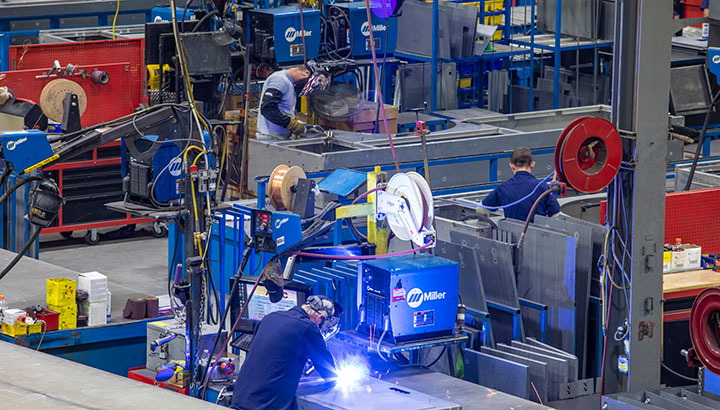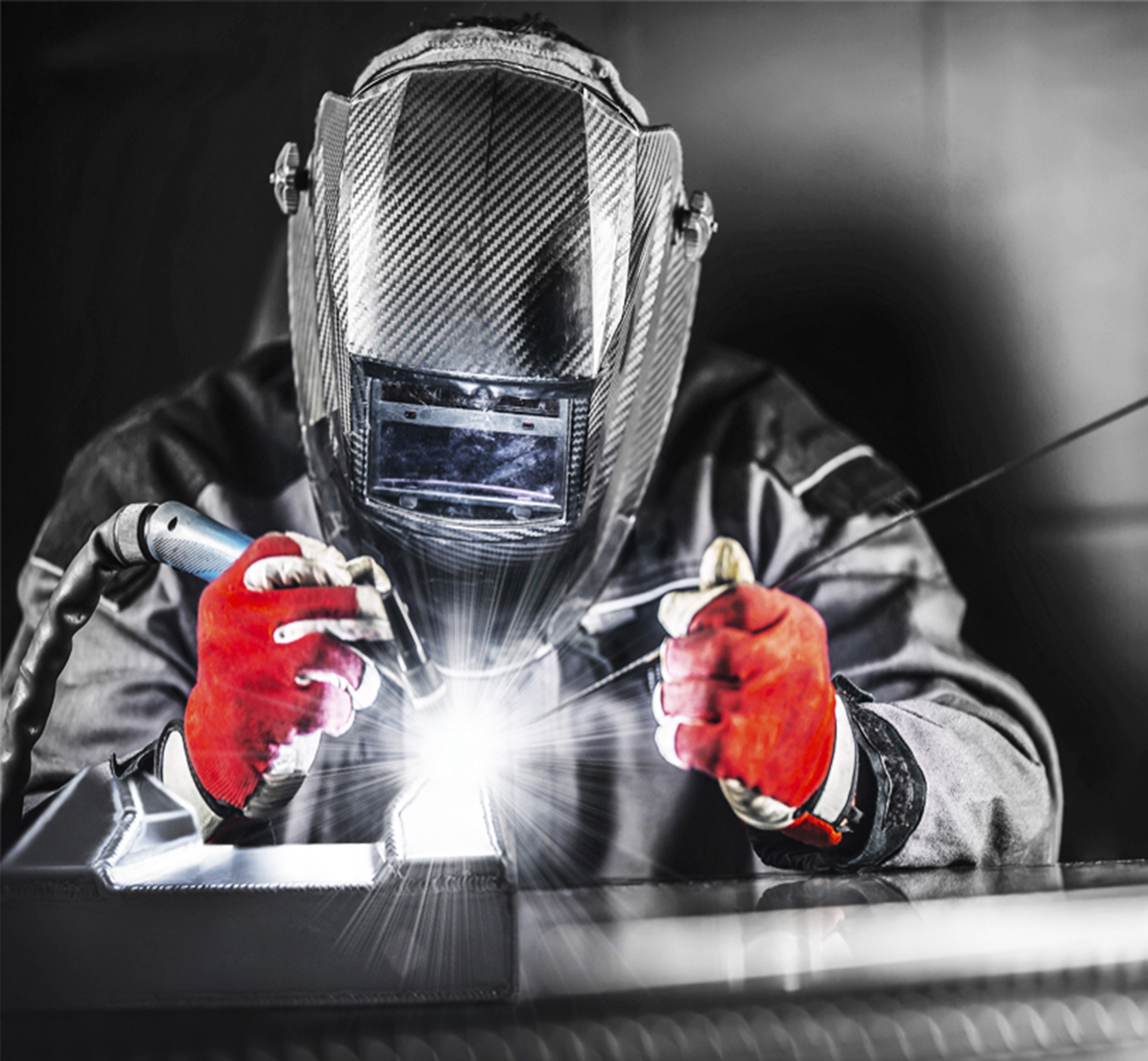A quick guide about overheating prevention from Montana Mobile Welding and Repair
Wiki Article
Usual Welding Fixing Issues and Just How to Address Them Effectively
Welding repairs usually encounter a variety of issues that can jeopardize the stability of the last product. Common issues consist of inadequate penetration, porosity, and imbalance, to name a few. Each issue provides one-of-a-kind obstacles that need specific methods for resolution. Comprehending these concerns is crucial for welders intending to improve their skills and end results. This conversation will discover these typical welding repair work issues and reliable techniques to resolve them.Insufficient Infiltration
Inadequate infiltration happens when the weld metal stops working to totally fuse with the base material, leading to weak joints and possible structural failings. This problem typically originates from insufficient warm input, inaccurate electrode angle, or improper welding rate. Welders may encounter insufficient penetration as a result of a mistake of the necessary criteria for a details material thickness or kind. In addition, contamination on the base material's surface area can prevent efficient bonding, exacerbating the problem. To resolve inadequate penetration, welders ought to ensure ideal setups on their equipment and preserve a clean work surface. Routine assessment of welds is advised to identify any type of deficiencies early, permitting prompt modifications and the prevention of endangered structural integrity in bonded assemblies.Porosity
Porosity is a typical defect in bonded joints that manifests as tiny gas bubbles trapped within the weld metal. This problem can jeopardize the integrity of the weld, resulting in lowered strength and potential failure under stress and anxiety. Fabrication. Porosity usually emerges from contamination, dampness, or improper welding strategies, which permit gases to escape right into the molten weld swimming pool. To address porosity, welders need to assure correct surface preparation, maintain a tidy working atmosphere, and make use of ideal welding specifications. In addition, choosing the ideal filler material and protecting gas can reduce gas entrapment. Routine examination and screening of welds can assist identify porosity early, guaranteeing prompt rehabilitative actions are taken, thereby maintaining the quality and reliability of the bonded structureImbalance
Misalignment in welding can emerge from different variables, consisting of incorrect setup and thermal growth. Comprehending the source is vital for reliable resolution. Numerous adjustment techniques are readily available to realign elements and ensure architectural integrity.Root causes of Misalignment
Welding imbalance frequently originates from a range of underlying concerns that can jeopardize structural stability. One key cause is inappropriate fit-up of components before welding, which can result in spaces and uneven surface areas. Variants in thermal development throughout the welding process can additionally lead to distortion, particularly if the products being signed up with have different coefficients of growth. In addition, poor fixturing and securing may fail to hold components firmly in location, causing activity during welding. Inadequately conserved devices, including welding devices and devices, may present disparities in the weld grain, additional adding to imbalance. Driver error, stemming from not enough training or experience, can additionally play a substantial duty in developing misaligned welds.
Improvement Strategies Available
Resolving imbalance effectively requires a combination of corrective methods customized to the details issues handy. One common approach is making use of fixtures or jigs to hold elements in the correct setting during welding, guaranteeing regular alignment. Additionally, preheating the materials can assist reduce distortion and improve fit-up. For substantial misalignment, mechanical adjustment methods, such as utilizing hydraulic jacks or clamps, can be utilized to correct the setting before welding. Post-weld heat therapy may likewise be needed to eliminate anxieties triggered by misalignment. Ultimately, mindful inspection and adjustment throughout the arrangement stage can stop misalignment problems from becoming significant issues, advertising a smoother welding process and enhancing total structural integrity.Distortion
Distortion is a typical difficulty in welding that can occur from numerous aspects, consisting of unequal heating & cooling. Comprehending the reasons for distortion is crucial for carrying out efficient prevention techniques. Resolving this concern not only improves architectural honesty however also improves the total high quality of the weld.Sources of Distortion
When subjected to the extreme warm of welding, materials usually go through changes that can bring about distortion. This phenomenon mostly emerges from thermal development and tightening during the welding process. As the weld location warms up, the material expands; upon air conditioning, it contracts, which can develop internal stresses. Furthermore, uneven home heating throughout a workpiece can aggravate these stresses, causing bending or bending. The sort of material likewise plays a considerable duty; steels with differing thermal conductivity and coefficients of development may respond differently, leading to uncertain distortions. Inadequate joint design and inadequate fixturing can contribute to misalignment during welding, enhancing the likelihood of distortion. Understanding these causes is necessary for efficient welding fixing and avoidance strategies.Prevention Techniques
Efficient prevention techniques for distortion during welding concentrate on managing warm input and making sure correct joint style. Maintaining a constant warmth input assists to lessen thermal growth and tightening, which can lead to distortion. Making use of strategies such as preheating the workpiece can likewise decrease the temperature level gradient, advertising uniform home heating. In addition, choosing ideal joint styles, such as T-joints or lap joints, can boost security and minimize stress and anxiety focus. Applying correct fixturing to protect the workpieces in position even more aids in maintaining placement throughout the welding process. Staggered welding sequences can distribute warmth extra uniformly, preventing local distortion. By using these methods, welders can significantly lower the likelihood of distortion and enhance the total top quality of their welds.Splitting
Breaking is a common issue come across in welding repair work, usually arising from numerous factors such as improper air conditioning prices, material option, or inadequate joint preparation. The occurrence of fractures can significantly compromise the stability of the weld, causing possible failures during procedure. To address this problem, welders should initially evaluate the origin, ensuring that materials work and appropriately picked for the specific application. In addition, managing the air conditioning price during the welding process is essential; quick air conditioning can induce tension and lead to splitting. Appropriate joint layout and preparation additionally contribute to decreasing the danger. Executing these techniques can boost weld top quality and toughness, inevitably decreasing the chance of fracturing in ended up weldments.
Insufficient Blend
A considerable concern in welding fixings is insufficient combination, which takes place when the weld steel does not properly bond with the base product or previous weld passes - Montana Mobile Welding and Repair Belgrade. This problem can result in weaknesses in the joint, potentially compromising the honesty of the bonded framework. Aspects contributing to incomplete fusion consist of not enough warmth input, inappropriate welding strategy, and contamination of the surfaces being signed up with. To resolve this issue successfully, welders should assure correct pre-weld cleaning and surface preparation, as well as adjust their welding specifications to attain ample penetration and combination. Routine assessment throughout the welding procedure can additionally aid identify incomplete fusion early, enabling timely corrective steps to improve the general top quality of the weldOverheating
While welding repair work can improve architectural stability, overheating presents a substantial difficulty that can bring about product degradation. Too much warm during welding can alter the mechanical buildings of metals, leading to reduced stamina, boosted brittleness, and warping. This sensation is specifically crucial in high-stress applications where structural dependability is vital. Recognizing getting too hot can involve visual assessments for discoloration or distortion, as well as keeping an eye on temperature during the welding procedure. To alleviate the risks related to getting too hot, welders need to use ideal strategies, such as managing heat input, readjusting traveling speed, and utilizing ideal filler products. Additionally, carrying out pre- and post-weld warmth therapies can help recover material properties and boost the general top quality of the repair service, ensuring long-term efficiency and safety and security.Regularly Asked Inquiries
What Are the Typical Indications of a Welding Problem?

Just How Can I Examine My Welds for High quality?
To evaluate welds for top quality, one can use aesthetic assessments, ultrasonic screening, and radiographic methods. Each method assures architectural integrity, determines flaws, and validates adherence to specified criteria, inevitably improving the dependability of the bonded joints.What Safety Preventative Measures Should I Take While Welding?
When welding, one should focus on security by wearing appropriate personal protective devices, ensuring correct ventilation, securing flammable products away, keeping a clean work space, and knowing environments to stop injuries and crashes.Can I Fix a Weld Without Redesigning the Entire Joint?
Repairing a weld without remodeling the whole v mig welder joint is feasible, depending on the damage (Belgrade). Methods such as grinding, adding filler material, or using a welding procedure can properly attend to details defects while protecting the surrounding frameworkWhat Equipment Are Crucial for Effective Welding Repair Works?
Important devices for efficient welding repairs include a welding device, cord brush, grinder, protective gear, clamps, and filler materials. Each tool plays a vital function in making certain high quality and security during the repair work process. Porosity generally emerges from contamination, dampness, or incorrect welding techniques, which enable gases to get away right into the liquified weld swimming pool. Poorly maintained tools, consisting of welding equipments and tools, may present incongruities in the weld bead, further adding to misalignment. When subjected to the intense heat of welding, products frequently undertake modifications that can lead to distortion. Cracking is an usual problem encountered in welding fixings, commonly resulting from different elements such as inappropriate cooling prices, product selection, or insufficient joint preparation. A substantial problem in welding fixings is insufficient blend, which takes place when the weld steel does not sufficiently bond with the base material or previous weld passes.Report this wiki page